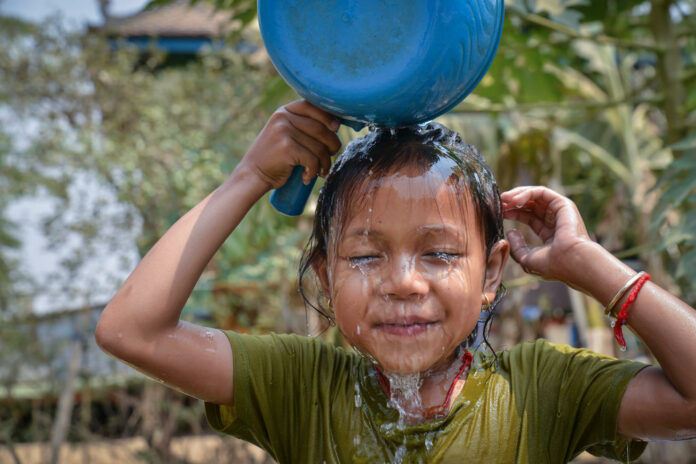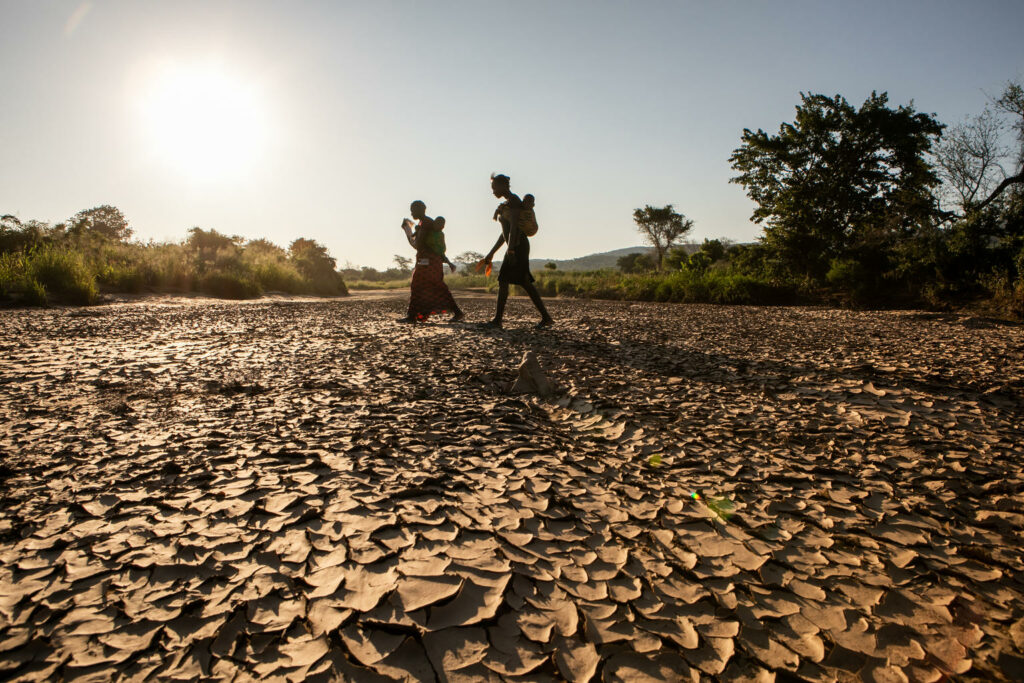
UNICEF warns urgent action is needed to increase funding for adaptation to protect children and vulnerable communities from worsening heatwaves and other climate shocks.
Thailand also faced problems with high heatwave frequency with an alarming rate of children’s exposure to high heat factors in 2020.
LONDON/NEW YORK/BANGKOK, 25 October, 2022 – 559 million children are currently exposed to high heatwave frequency*, according to new research from UNICEF. Further, 624 million children are exposed to one of three other high heat measures – high heatwave duration, high heatwave severity, or extremely high temperatures.
During a year in which heatwaves in both the southern and northern hemispheres broke records, The Coldest Year Of The Rest Of Their Lives: Protecting Children From The Escalating Impacts Of Heatwaves highlights the already extensive impact of heatwaves on children and reveals that, even at lower levels of global heating, in just three decades, more regular heatwaves are unavoidable for children everywhere.
The report estimates that by 2050, all of the world’s 2.02 billion children are expected to be exposed to high heatwave frequency, regardless of whether the world achieves a ‘low greenhouse gas emission scenario’ with an estimated 1.7 degrees of warming in 2050 or a ‘very high greenhouse gas emission scenario’ with an estimated 2.4 degrees of warming in 2050.
In Thailand, the report showed an alarming rate of children’s exposure to high heat factors in 2020, in which Thailand has faced problems with high heatwave frequency. Over 75 percent of children under 18, or around 10.3 million, have been exposed to. If no action is seriously taken, almost every child under 18 in Thailand will suffer high heatwaves more often and longer in 2050.
Produced in collaboration with The Data Collaborative for Children and launched in partnership with UNICEF Goodwill Ambassador Vanessa Nakate and the Africa-based Rise Up Movement, these findings underscore the urgent need to adapt the services children rely on as unavoidable impacts of global heating unfold. It also makes a case for continued mitigation, to prevent the worst effects of the other high heat measures, including longer and hotter heatwaves and higher extreme temperatures.
“The mercury is rising and so are the impacts on children,” UNICEF Executive Director Catherine Russell said. “Already, 1 in 3 children live in countries that face extremely high temperatures, and almost 1 in 4 children are exposed to high heatwave frequency, and it is only going to get worse. More children will be impacted by longer, hotter, and more frequent heatwaves over the next thirty years, threatening their health and well-being. How devastating these changes will depend on the actions we take now. At a minimum, governments must urgently limit global heating to 1.5 degrees Celsius and double adaptation funding by 2025. This is the only way to save children’s lives and futures – and the planet’s future.”

Heatwaves are especially damaging to children, as they are less able to regulate their body temperature compared to adults. The more heatwaves children are exposed to, the greater the chance of health problems including chronic respiratory conditions, asthma, and cardiovascular diseases. Babies and young children are at the most significant risk of heat-related mortality. Heatwaves can also affect children’s environments, their safety, nutrition, and access to water, and their education and future livelihood.
The report found high heatwave duration currently impacts 538 million, or 23 percent of, children globally. This will rise to 1.6 billion children in 2050 at 1.7 degrees warming, and 1.9 billion children at 2.4 degrees warming, emphasizing the importance of urgent and dramatic emissions mitigation and adaptation measures to contain global heating and protect lives.
Millions more children will be exposed to high heatwave severity and extremely high temperatures depending on the degree of global heating reached. Children in northern regions, especially Europe, will face the most dramatic increases in the high severity of heatwaves and, by 2050, nearly half of all children in Africa and Asia will face sustained exposure to extremely high temperatures.
Currently, 23 countries fall into the highest category for child exposure to extremely high temperatures. This will rise to 33 countries by 2050 under the low emissions scenario and 36 countries under the very high emissions scenario. Burkina Faso, Chad, Mali, Niger, Sudan, Iraq, Saudi Arabia, and India are among the countries expected to remain in the highest category in both scenarios.
“The climate shocks of 2022 provided a strong wake-up call about the increasing danger hurtling towards us,” said Vanessa Nakate, climate activist and UNICEF Goodwill Ambassador. “Heatwaves are a clear example. As hot as this year has been in almost every corner of the world, it will likely be the coldest year of the rest of our lives. The dial is being turned up on our planet and yet our world leaders haven’t begun to sweat. The only option is for us to continue to turn up the heat – on them – to correct the course we are on. World leaders must do this at COP27 for children everywhere, but especially the most vulnerable children in the most affected places. Unless they take action, and soon, this report makes it clear that heatwaves will become even harsher than they are already destined to be.”
UNICEF is calling on governments to:
- PROTECT children from climate devastation by adopting social services. Every country must adopt critical social services – water, sanitation and hygiene (WASH), health, education, nutrition, social protection, and child protection – to protect children and young people. For example, food systems must be strengthened to withstand hazards and ensure continued access to healthy diets. Increased investments must be made in the early prevention, detection, and treatment of severe malnutrition in children, mothers, and vulnerable populations. At COP27, children and their rights must be prioritized in decisions on adaptation.
- PREPARE children to live in a climate-changed world. Every country must provide children and young people with climate change education, disaster risk reduction education, green skills training, and opportunities to meaningfully participate and influence climate policymaking. COP27 must-see countries strengthen the focus on children’s climate education and empowerment in the ACE action plan, adopt it, and implement previous commitments to build youth capacity.
- PRIORITIZE children and young people in climate finance and resources. Developed countries must deliver on their COP26 agreement to double adaptation funding to $40bn per year by 2025 at a minimum, as a step to delivering at least $300bn per year for adaptation by 2030. Adaptation funding must make up half of all climate finance. COP27 must unlock progress on loss and damage, placing the resilience of children and their communities at the center of discussions on action and support.
- PREVENT a climate catastrophe by drastically reducing greenhouse gas emissions and keeping 1.5 degrees Celsius alive. Emissions are projected to rise by 14% this decade, putting us on a path to catastrophic global heating. All governments must revisit their national climate plans and policies to increase ambition and action. They must cut emissions by at least 45% by 2030 to keep heating to no more than 1.5 degrees Celsius.
#####
The preceding is a press release published with full permission and authorization by the organization(s) listed in the PR material and TPN media. The statements, thoughts, and opinions of the organization involved in the press release are entirely their own and may not necessarily represent those of TPN media and its staff.



